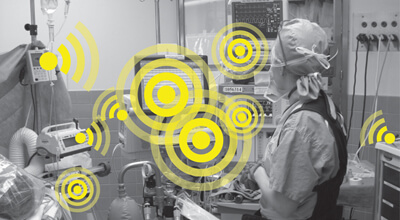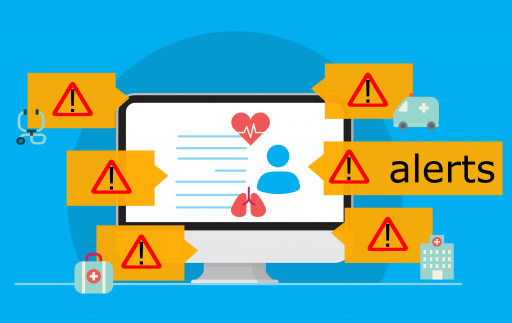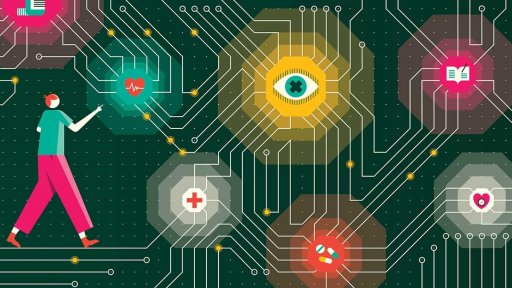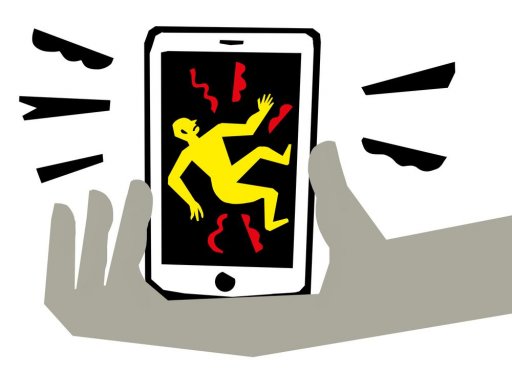The Medical Futurist | 7 min | 13 February 2020
Have you heard of the story of The Boy Who Cried Wolf? It goes something like this: once upon a time, there was a shepherd boy who would cry for help for an impending wolf attack. This was naturally taken seriously by the village’s shepherds who would go on to protect their herd. However, it turns out that the fun-loving boy was just teasing the villagers and there was no wolf in sight. But the problem was, he would do this repeatedly until no one would take him seriously, even on the day when he saw an actual wolf and no one heeded his call for help.
This analogy aligns very well with what is known as alarm fatigue in the healthcare world. This phenomenon refers to the point when caregivers become desensitized to alarm signs from the myriad of devices emitting a cacophony of beeps all day in the clinical setting. With as many as 187 alarms per bed per day, of which 72% to 99% being false alarms, it’s understandable that alarm fatigue came to exist, with healthcare practitioners at risk of disregarding important alerts which might even be fatal.
So how bad is it and how does A.I. come into play?
As the healthcare sector adopts more and more technologies, the increased number of tech-aided devices from ventilators through feeding pumps to vital sign machines will bring along their own alerts for warnings, but the truth is, most don’t require clinical intervention and are due to improper readings resulting from devices and alarms not set up for individual patients.
For example, patients with a low ECG voltage will trigger unnecessary alarms if the monitor is not adjusted properly. But among the endless bells and chimes from the innumerable devices, how can caregivers discern from those real “cries for wolf” from the false ones?

In fact, there are even so-called “alarm-related deaths”. A study put the related death toll to about 200 per year. That’s a considerable amount of deaths that can be attributed to alarms. It’s no wonder that the Emergency Care Research Institute listed “Alarm, Alert, and Notification Overload” as one of its Top 10 Health Technology Hazards for 2020.
When you hear that hospitals have dedicated “alarm committees”, then you can bet that the issue is being taken seriously. But what is being done and what can be done against alarm fatigue?
Manual tweaks
There are several steps that have been proposed and undertaken to tackle alarm fatigue. For one, the tried and tested method of cleaning and maintenance of equipment holds true in order to reduce alarms related to malfunctions. Another simple technique is to decrease the alarm’s decibel. By switching cardiac monitor thresholds from “warning” to “crisis”, the Boston Medical Center saw a drop in noise levels from 92 dB to 70 dB and a 89% decrease in audible alarms. Subsequently, it was found that nurses were quicker to respond to patients’ needs.
Another method is to tailor alarm signals of devices to each patient’s needs. For example, by changing the default heart rate settings according to each patient’s condition, the Boston Medical Center decreased the number of alarms from cardiac monitors by 60%. By adopting a similar approach, Johns Hopkins Hospital saw a 24%–74% reduction in the number of alarms per bed per day across six units.

On top of in-house solutions, organisations like the Association for the Advancement of Medical Instrumentation and The Joint Commission issue recommendations to curb alarm fatigue. However, all of these measures are mostly focused on manually tweaking the existing settings, but A.I. can bypass these measures to offer an equally, if not more, effective solution to combating alarm fatigue.
Artificial Intelligence jumps into the picture
We mentioned that up to 99% of current alarm signals from patient monitoring devices are clinically insignificant. Now imagine hearing 99% fewer alarms but only hearing the one that really requires medical attention. This is the promise that A.I. offers and it has already been put into action.
Researchers have recently developed an A.I. solution to help caregivers cope with the auditory overload. They deployed their reasoning algorithm to analyze a dataset containing patient monitoring data and vital signs recorded during 32 surgical cases, which could then decide whether to group notifications rather than send individual ones so as to prevent alarm fatigue. They published their findings in a paper which showed that their automatic reasoning mechanism helped reduce notifications received by the caregivers by up to 99.3%!
As the authors noted, “nearly all studies assume that a reduction in the number of total alarms and/or false alarms will reduce alarm fatigue”. However, the results are still at an experimental stage with more progress required before launching such an A.I. in a clinical setting.

Johns Hopkins Hospital on the other hand has developed algorithms for alarm escalation and thresholds to make them more actionable and are already put to use in some of their units. “For example, if a nurse already knows a patient has atrial fibrillation, the alarm doesn’t have to go off each time a non-threatening episode occurs,” explained Robert Frank, a Clinical Engineer at the institution.
Another great example is the A.I. solution implemented in El Camino Hospital to predict falls that result from alarm fatigue. Developed by Qventus, the program collects data obtained from call lights, bed alarms, and electronic medical records to give a predictive analysis of when a specific patient is likely to fall, which is usually missed by caregivers due to alarm fatigue. This method led to a 39% reduction in patient falls.

Such smart alarm systems should become omnipresent in hospitals. By having algorithms evaluate patients’ parameters collected across the plethora of connected devices, they can determine when to really sound the alarm for professional attention. The results are there to show that they can effectively reduce the number of false alarms, thereby slashing alarm fatigue.
A word of caution
The authors of the recent paper wrote in their closing note that their system is still in an experimental stage and does not consider an important aspect: security. Indeed, this is a crucial issue to factor in while developing such A.I.-driven hospital alarms. They will have to be carefully monitored and developed not to overlook seemingly benign notifications. The researchers mention that their future work will incorporate a false alarm probability label in the notifications that the A.I. sends over, so that caregivers can prioritize their work.
Moreover, with such tools, there is always the lingering threat of a hack which can compromise patient safety. For example, what if a whole unit’s alarm system has been breached, muting all notifications without nurses and doctors even being aware? As such, the A.I. solutions have to be developed in a way to be effective and connected while being secure. The technology seems to be in its infancy but given the rate of technological advances, it might quickly get adopted. And before that happens, it is crucial to ensure that the solution is as safe as possible.

The technology might not be widespread yet but with time, A.I. solutions will be incorporated in patient monitors as a built-in “smart alarm system” throughout hospital units. This is likely, given the obvious burden they help take off caregivers’ shoulders, alerting them only when a patient really requires attention and hence, helping make patients the point-of-care. With time, alarm fatigue might find a similar fate to the story of The Boy Who Cried Wolf, relegated as a fable to impart a moral lesson to the younger generation.

